On a train ride from Berlin to Gdansk, I encountered that laminal experience wherein not only auditory consciousness gains access to the deepest internal and bodily experience of hearing that is the externally silent transversal of dreams but also the sensitivity grew that there was indeed a code that could be discerned in it all and a way to translate it sensibly. While the wheels where running and I tried desperately for hours to doze off, there came that peculiar leveling of the hearing, the one in which there is no longer judgment made over the signal to message ratio of sounds and they all became equal partners in a weaving of sonorous percussivities that merits deeper political consideration. While mankind makes sounds to be heard across nature, all of nature works simultaneously and without interruption across all the sound we make trying to communicate and, in theory at least, retains the power of feeling less self-important. That is why these sounds can ooze back into the bodily folds and maintain a relation with our elemental and animal fundament. We cannot detach, for all our mass miscommunications, from the overall pulse of the elementalities riding through wave-forms and which in our atmosphere render audible gusts from the distant comminglings of winds. But when I was searching most to sleep, encountering this interpenetration of spheres, to take the Cagean or Kabbalstic phrase, I was simultaneously having the visionary experience of the backs of my eye-lids and the light trapped in the brain flashing like so many retinal flowers of rods and cone. Eventually, a strangely red glow formed on the wall of the cabin and I found my entire being sucked with the glee of a renegade autonomous vacuum cleaner into this unlikely portal. I immediately found myself adrift amidst corpuscular beings, strands that I could perceive following variable geometric patterns, the roseaceous and laser pontillist figures metamorphosing in seeming randomness and yet sensibly evolutionary, with a grade of steadiness that defied our clock’s temporalities. These fields of swarming fireflies opened their wings to let small sounds out from glands secreted therein and, yes, they appeared also to be rufflings of wings that visually stimulated some cortex to send a buzzing into my ears. This condition of sound created internally that some call tinnitus is in fact a place of maddening resonance with the usually forgotten pulsations outside us.
I then recognized that the laser points constituting these strands bore a unique resemblance to the stochastic elements of field recording that, if left to spin in discs of their own design, would create unpredictable but also curiously consistent and observable family relationships. In fact, these once monocellular creatures began to assume the shape that we can recognize as part of our ancient and contemporary bestiaries but imbued with a completely plastic character that admitted of miscegenations and foetai that were half-moose and human, half-deer and lobster, birds with long fertilizing noses that resemble the flowers’ pistils. In short, these were hybrids. Their sonic emmittances where similar to what I described above visually. Their fur made a sound that was as loud as the leaves they rubbed against wandering their forlorn and shrinking forest in the rural stretches beside the rail-road tracks of Poland. The birds became extremely fluent in their passages from one species to another and they accelerated the rate of the movement of the light locked into and emitted from the corpusculars. One of these transitionary entities had a particular taste for my ear and while the ear seemed to grow towards this luminous animal it also descended into and traced the contours and convolutions of the spiral with a gentle and caring ligament somewhat like a tongue. It was soon to be revealed, however, that, while this seeming paradise could not be detached from the alarming rates of movement provided by noisy and noxious machines, and the fact it was in Poland, the train had ceased to move. The birds were singing now, now staccato, now, this, that, the other. Tweets, chitters, piffs, clips and shirrils and it was then I opened my eyes to see between the slit of the curtains that we where--somehwere--in a station. A female voice came stra-melodically over the speakers repeating what we can now assume to be the schedule and track changes for unseen trains en route to or in patenza from that "whatever" place. It was perhaps one of the most beautiful sounds I'd ever heard a train-station exude.
If we can mix sonic realms, does this not give us a great opportunity, perhaps before dreamed but never given to all as a platform for personal psychic experimentation until the present moments, to encounter a cross-pollinization of substances drifting in the universe and coalescing into vibrant sacs of aural intensity? And from the auditory intercalation, we can imagine a genetics of sound, a place where the splicing of originary elements of nucleic acids is mirrored in this organic mash-up of songs, those which mingle together in our minds and bodies but which also emerge from them the way croaks do from frogs. It could be that in phonography lay a key to those shamanistic or otherwise indecipherable amalgams of forms we see in the ancient caves and petroglyphs, the graffiti whose cascades and cadences announce the birth of a singularity culminated from the generations and yet giving us an awareness of the sacrificial ingestions that of necessity sustain us. Therein I think reside both an ethics and an ecology that is not easily reducible to the rationality standing over and against us in the capitalist and corporate ontologies of exploitation. We can emerge yet from the corpuscular clouds of, and with some new, information. Composition and hybridization creates the possibility of recomposing a great masterwork that is unfinished and its forms sui generis follow from the hybrids that are not so much an engineering as they are a shape discerned necessary and beautiful in decomposition. And in the analysis of its hidden life forms we find in the materiality of sound a music informed by the noise that perches on the barriers of culture.
Jeff Gburek
Feb. 10.07
Berlin
Tuesday, June 26, 2007
Subscribe to:
Post Comments (Atom)
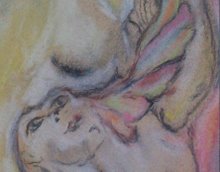



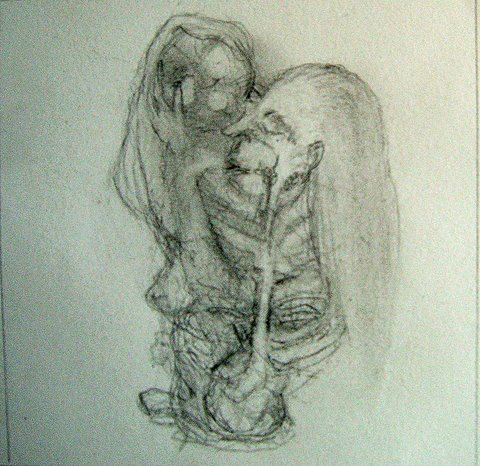
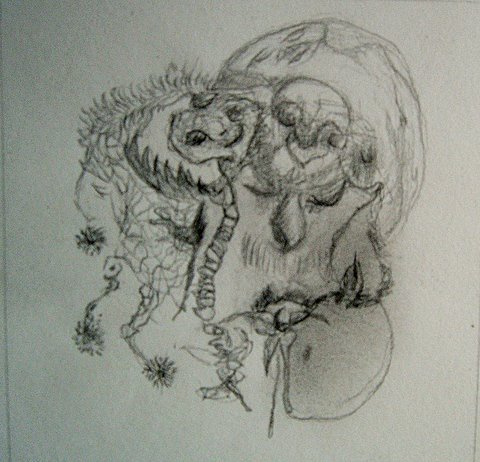
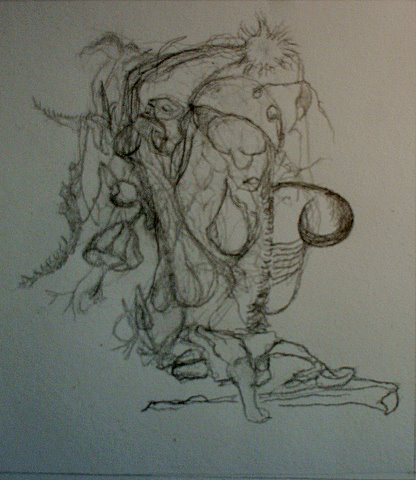
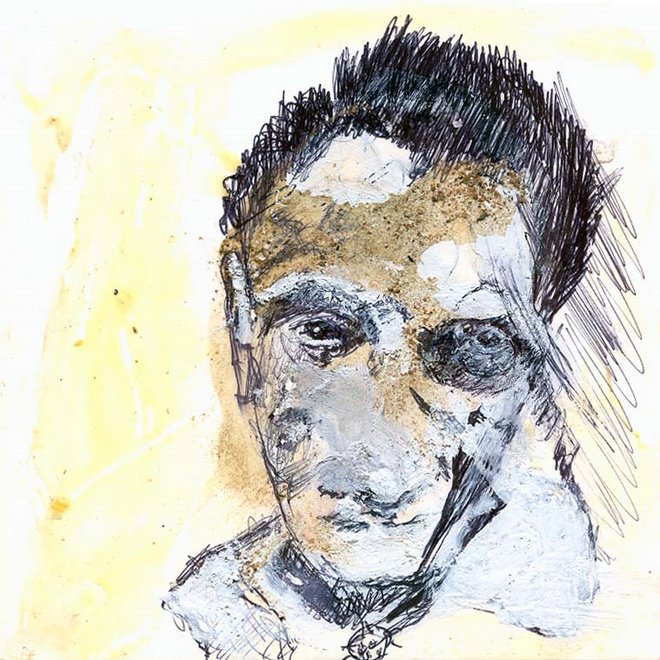
1 comment:
Very good article, well written and very thought out.
Post a Comment